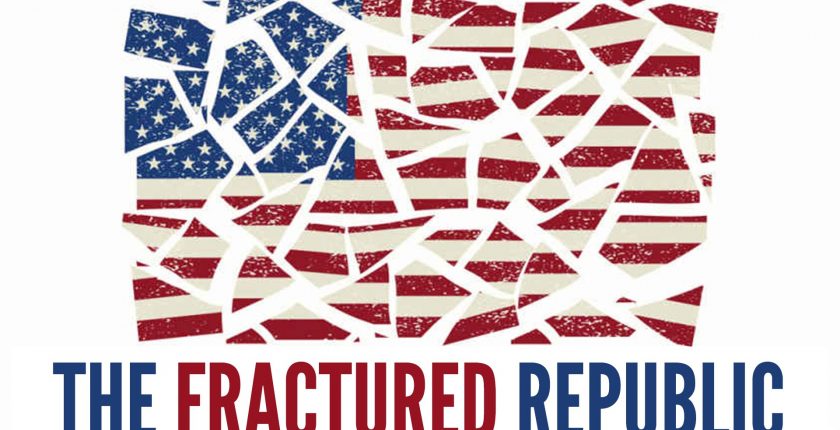- Visitor:40
- Published on:
Decentralization of Social and Economic Policy – FR – Part 3
This is an excerpt from the book “The Fractured Republic” by Yuval Levin. He is discussing how economy cannot be studied and treated in isolation and needs a more holistic framework. Economic debates are not the only ones worth having, and are usually not the ones that run the deepest or that do the most to shape our society. Economic arguments are inseparable from cultural ones, and the arrow of causality runs in both directions. Our culture shapes our economic goals and is shaped by our economic relations; our economy reflects our cultural priorities and is reflected in our cultural trends and patterns.

A decentralized approach to social and economic policy would not only recognize the limits of our knowledge but also speak to the particular problems we now confront. It embodies not just an epistemic humility but also a commitment to subsidiarity—to empowering institutions at different levels of our society to address those problems for which they are best suited.
 The weakening and hollowing out of some of those mediating institutions is an important part of the challenge we face, and a notable consequence of a half century and more of deconsolidation. By giving such institutions a role in public policy, by channeling resources through them and allowing them to offer various ways of helping to meet needs and solve problems, we can draw people into them. We can offer those institutions renewed purpose and an opportunity to construct social capital around them, and to bring into being vibrant subcultures of mutual commitment with real moral content.
The weakening and hollowing out of some of those mediating institutions is an important part of the challenge we face, and a notable consequence of a half century and more of deconsolidation. By giving such institutions a role in public policy, by channeling resources through them and allowing them to offer various ways of helping to meet needs and solve problems, we can draw people into them. We can offer those institutions renewed purpose and an opportunity to construct social capital around them, and to bring into being vibrant subcultures of mutual commitment with real moral content.
And by giving them a role in the work of addressing material problems, we can strengthen their ability to deal with some more-than-material problems and to pull people into the space we have too frequently been rushing out of for a century now—the space between the individual and the state.
What happens in that space generally happens face to face, at a personal, human level? It therefore answers to immediately felt needs, and is tailored to the characters and sentiments of the people involved. This is both good and bad, to be sure. It means that what happens in that space can be moved by resentments and prejudices, by old hostilities, and by greed and vanity. Concern about these possibilities, and perhaps especially about racial and class animosities, is at the heart of what worries many progressives about subsidiarity.
But what happens in that space also can be, and often is, moved by warmer sentiments—by the love that binds families; by fraternity, friendship, and loyalty; by compassion for the poor and the weak; by a passion to see wrongs righted; by ambition and a drive to excel and to be seen as excellent; by a desire to give our children more opportunities; by commitment to the places we are from and the mutual support of neighbors; and by love of country.
These sentiments, not systems of material provision, are what makes society tick and holds it together. Centralized administration never could adequately replace them, and it certainly cannot do so now. We must be alert to the dark side of our mediating institutions, but we must also understand that their vitality is essential to our health as a nation.
Moreover, in our era of dismally low trust in large institutions, these kinds of human-scale middling structures can act as mediators between our increasingly ideological political parties and a public wary of their ambitions. By empowering mediating institutions, rather than only using the levers of federal power directly in the lives of individuals, both conservatives and liberals can temper their own (and one another’s) aspirations and help make their agendas more palatable to the American public.
The mediating institutions also offer us a means of counterbalancing the market without unduly undermining its potential to improve our society’s wealth and freedom. By enabling experimentation and evaluation to happen through institutions (schools, churches, local civic groups, nonprofits, and the like) that are not themselves fundamentally dominated by the moral logic of the market, we can create a constructive tension that can help us to make the most of democratic capitalism.
Markets are rooted in some deep truths about the human condition, but so are families, communities, charities, religious congregations, fraternal groups, unions, and countless other institutions. Precisely if we are going to give market mechanisms an even greater role in the life of our society, as we should, we must also recognize their limits and their risks, and empower other free institutions that will incline to balance their excesses.
Putting our trust in a centralized government to strike that balance is not only imprudent but also misguided, because, as we have seen again and again, a powerful central state will tend to pose many of the same dangers as unbounded markets, and will tend to drive our society toward the same peculiar combination of excessive individualism and excessive concentrations of power. A better balance could be found in the fertile space between the two.

Finally, empowering the mediating institutions is also a way to deal with the sheer diversity and profusion of our society. The fact is that Americans now have very different ways of living, cultural mores, and assumptions and expectations. We are much more diverse than we were half a century ago, in a moment of unusual conformity. And in looking for ways to mitigate the ill effects of this diversity (and to enjoy its benefits, too), we can look to the example of some earlier generations of Americans who contended with the multiplicity of our society by restricting the power of the central government. American life did not then require an impossible homogeneity, but instead made room for some differences while also holding all of us together. Federalism has at times served us well in that regard.
The age of consolidation was rooted in the premise that genuine federalism and localism were no longer tenable, and perhaps they weren’t for a time. But now subsidiarity is again becoming essential, and we should use the exceptional advantages it offers us in addressing our modern dilemmas. That is to say, we should allow different economic and social models to operate simultaneously in different places and to serve the many needs of a diverse nation in accordance with a wide variety of priorities and preferences.
If we do turn over more responsibility to the institutions of our civil society and local government, we will need to do so with the recognition that these institutions have been weakened in recent decades, for all the reasons we have seen. It would be a mistake to imagine that they stand waiting, ready and strong, just beneath our liberal welfare state, so that we need only roll back that state and they will step up. That assumption would, for one thing, partake of a misleading fantasy of volunteerism that paints a partially distorted picture of America’s past—as if all the things now done by our programs of public assistance were once done by churches and fraternal organizations.
And it would also ignore the erosion of families, communities, and civil society in our time. The mediating institutions do not just need to be unleashed—they need to be revived, reinforced, and empowered. This, too, is an important reason to give them roles to play in the modernization of our approach to mobility and welfare.
Of course, this can only be a very partial set of solutions, at best. Indeed, the term “solutions” is much too strong. What a humble, subsidiarity-based approach to social policy in the age of diffusion can offer is a way to push back against the pressures of hyper-individualism without attempting an impossible return—or, to put the point more cheerfully, to retain the greatest benefits of diversity and dynamism while mitigating some of their greatest costs. It is a way to live in tension, not to resolve the tension.
And it is not an approach we can or should pursue in every instance. Sometimes, we will need to press for reconsolidation at the margins, and resist forthrightly the inclination toward diffusion and fracturing. Sometimes, we will need to reject the ethic of the consumer and insist on the ethic of the citizen. And sometimes, we will need to resist the implicit premise of so much of modern politics—that improved living standards are the equivalent of an improving society—and will need instead to reach for other, deeper visions of the good by recovering some sliver of the ethic of a prior, pre-capitalist age, both through liberal education and through unabashed allegiances to sacred, pre-modern truths.
We must do these things knowing that they are essential counterbalances to the tendencies of our time, but knowing also that none of us can live a purely countercultural existence, and that our society cannot thrive at war with itself. Even as we resist the excesses of our age, we should nonetheless find the best in its predilections. We should seek for ways to run with the grain and to make diffusion and diversity work in favor of the human good, as for now we can hardly hope to reverse them, and most of us would hardly want to.
When it comes to economic questions, we should therefore find the best in the age of the specialist and use it to address the worst. We can do this by putting an intense emphasis on mobility in our policy debates, and by empowering our mediating institutions as a means of discovering solutions and offering aid. And we can do it by seeing the difference between material comfort and genuine flourishing.
But ultimately, we can really only achieve these goals by recognizing that economic debates are not the only ones worth having, and are usually not the ones that run the deepest or that do the most to shape our society. Economic arguments are inseparable from cultural ones, and the arrow of causality runs in both directions. Our culture shapes our economic goals and is shaped by our economic relations; our economy reflects our cultural priorities and is reflected in our cultural trends and patterns.
And the relentless drive toward diffusion and specialization evident in America’s contemporary economic life is also plainly apparent in our fracturing culture—which has been losing its mainstream, but gaining a near infinity of tributaries.
- 20 min read
- 0
- 0









.jpg)
